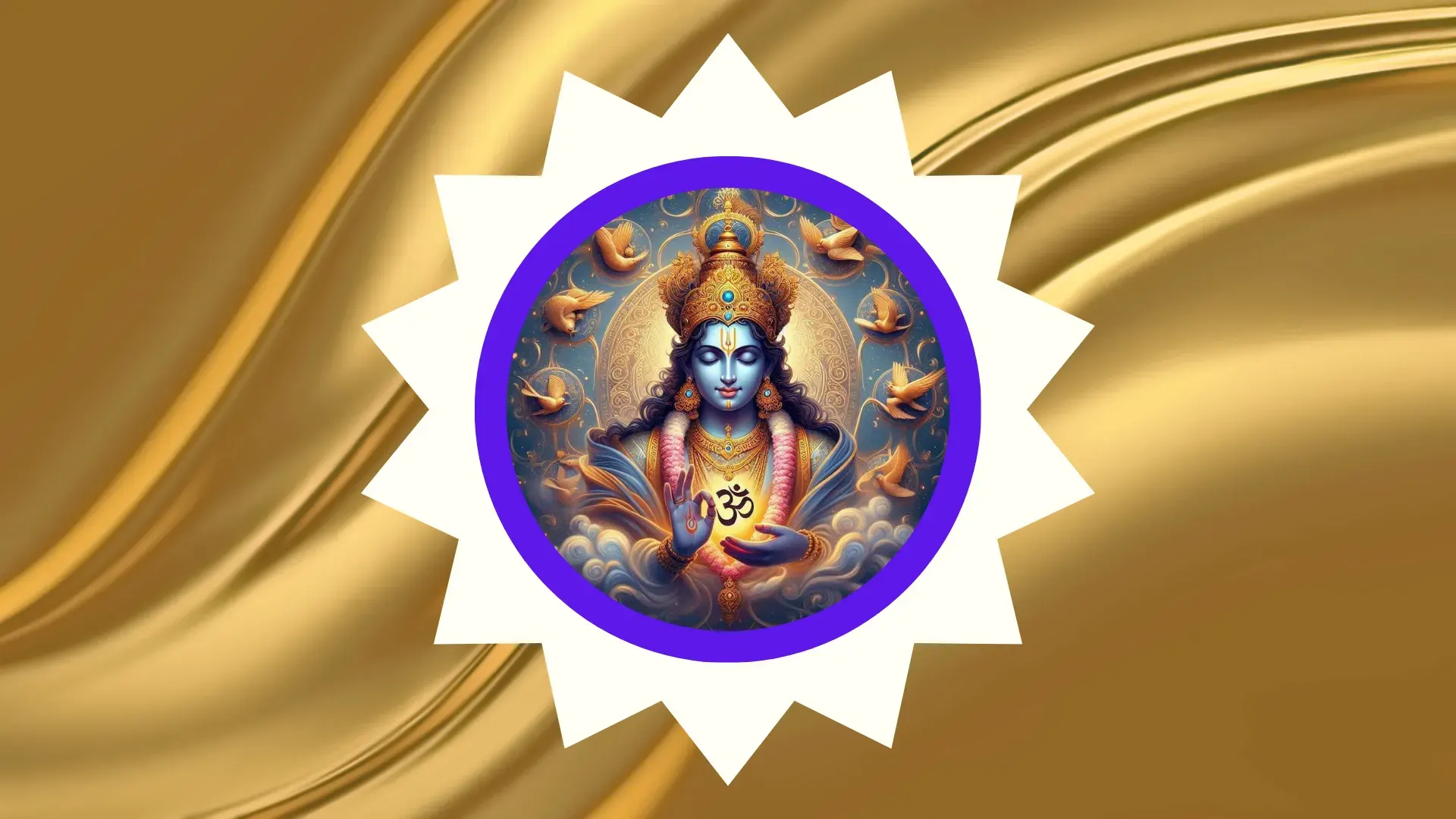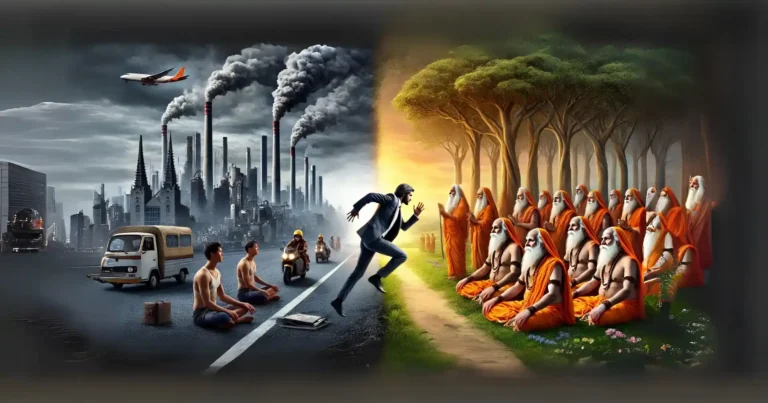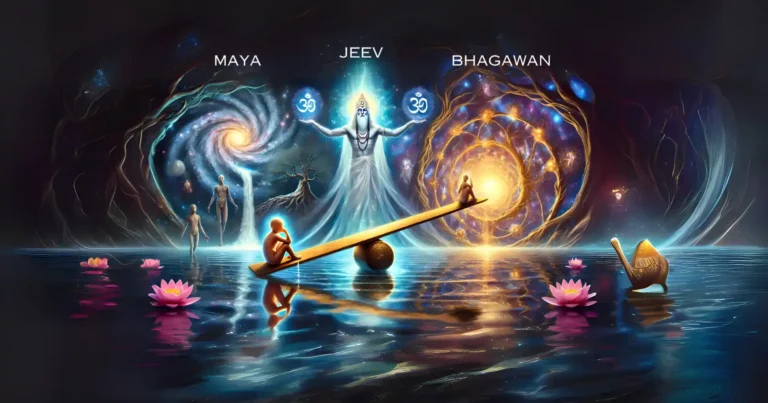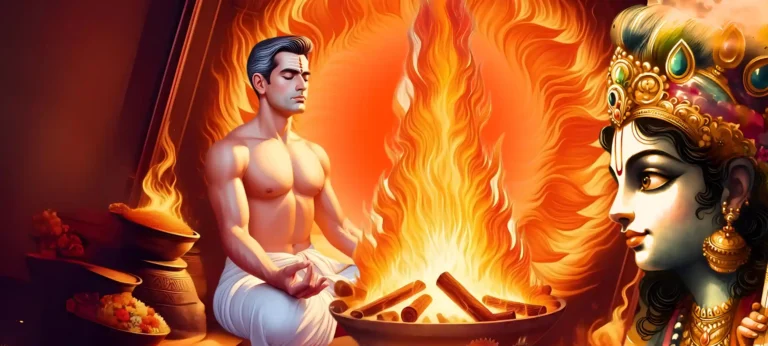Please Like the Blog and Share it for Maximum Reach
Table of Contents
Oneness and Duality
The question of Formless and Form is an ageold one. Though the destination is one, the paths are different. Perhaps from a broader view they might contradict each other. One school says ‘Oneness’ while the other says ‘Duality.’
If I say, both are the same, then what’ll be your reaction?
Form and Formless are one and the same
The various concepts, seen through many schools of philosophy focus on altering the state of present consciousness to a superior state of consciousness. Sadhana is the central focus and the medium to attain that perfect state.
Fight between Bhakti and Jnana schools
But, it is common to see people of the Jnana School ripping apart the Bhakti school by calling it hallucination. They say there is no abode or Loka and everything is Brahman. This is true, but it is partial truth. It cannot be taken literally.
Similarly people of Bhakti school mock at oneness expressed by Jnanis. They call this state hallucination. Keeping all these points in mind, we shall see the discrepancies that have followed through the newer generations and how the original philosophies of the various Sampradayas have come into a baseless conflict.
The major challenges overcome by Harmony
The age-old conflict of establishing one aspect superior to the other can be put to end through individual learning. Ultimately, one must sanction one’s realizations from a bonafide authority, mainly the scriptures. Some great spiritualist said that- You can attain perfection of Sadhana (be it through Jnana or Bhakti), only by harmonizing the Shastric statements.
What we fail to see?
We perceive contradictions in both the philosophies owing to our inability to see them in harmony, although those very teachings sync with one another. Until we are able to see everything in line with the scriptures without dissecting them according to our thought process and mindsets, conclusions are error prone.
Accepting one teaching and discarding the other simply reflects a biased mind.
The Shastras or Scriptures should be known through Acharyas or Gurus whose vision has been cleared with the heat of sadhana and the coolness of love they have attained as a blessing from their respective Guru Sampradaya System.
The mind is yet not an open vessel to house the spiritual essence. Actually, there is no true conflict as both the schools propagate the one, same principal.
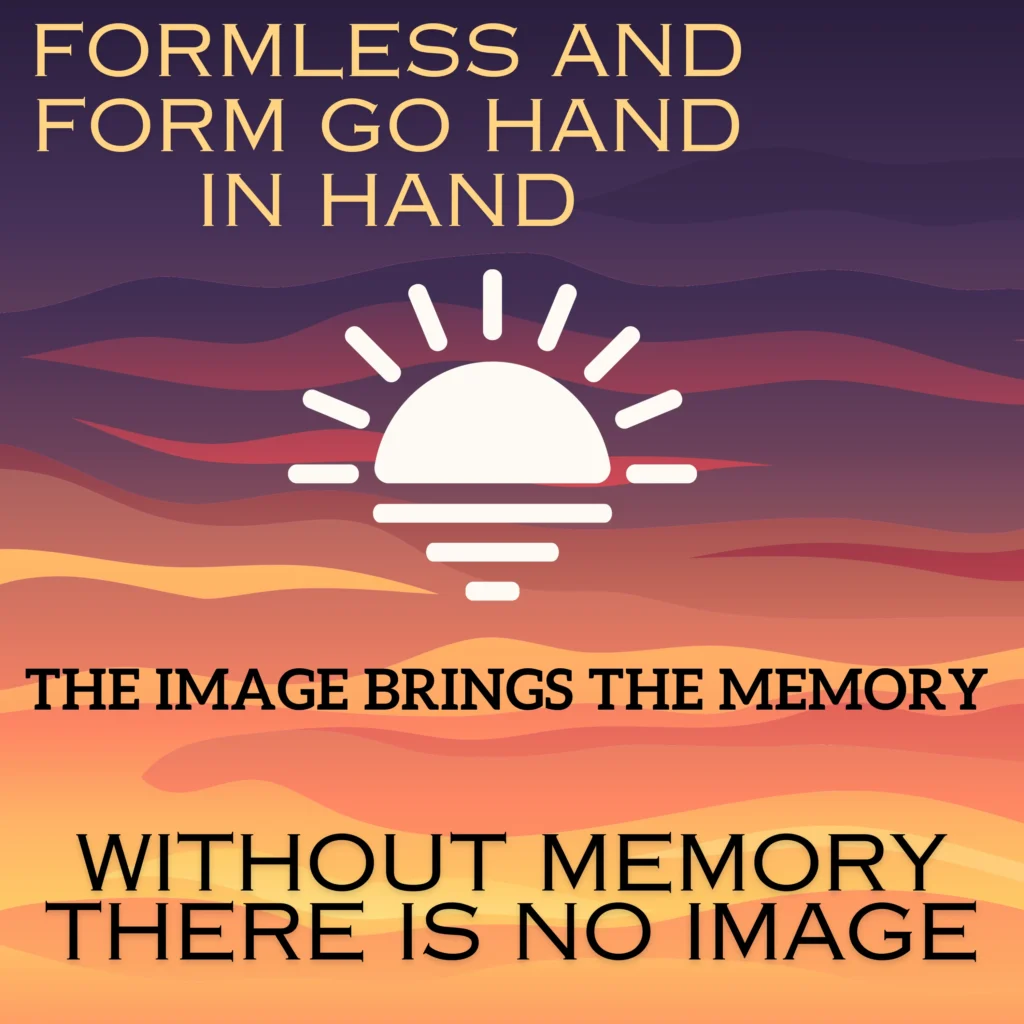
However, we can see a differences in approach owing to the difference in time.
Also, we see a blaring difference in the philosophy in terms of form and formless just because of the keen attraction of the guru of the Sampradaya.
The opinion of the Shastras
The Shastras as in Bhagavatham and Ramayana speak of both the Brahman (formless aspect) and Bhagawan (form aspect) of the supreme person. So, a perfect philosophy must possess both the teachings in harmony. It must hence not contradict the Shastras. Talking only of about Form discarding the Formless aspect is a skewed or crippled approach towards Dharma Shastras. It is the same, the other way around. Indeed, one needs to develop a vision to harmonize the formless and form aspect of the Supreme Being.
Why consult the scriptures?
If realizations contradict the scriptures, where one concept is cutting through the other, then the theory is half-baked and has no relevance. Until a sadhaka maturely embraces all theories presented in the Shastras without having biases, complete realization can perhaps never dawn.
Who is Adi Shankaracharya?
Adi Shankara, the incarnation of Lord Shiva Himself initiated Shaivisim. Lord Shiva is a perfect Jnani.
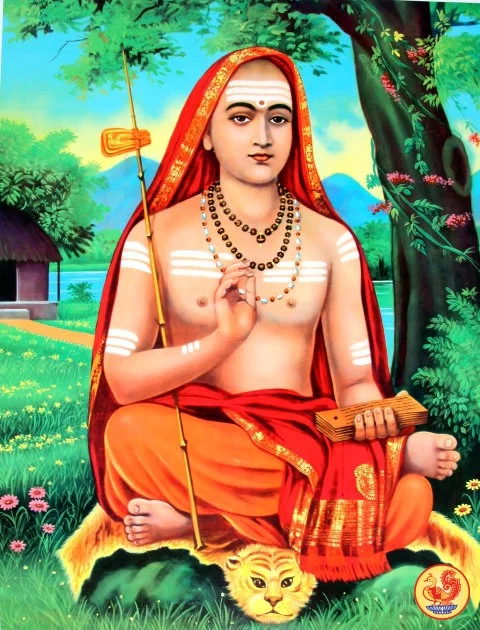
Therefore, propagating God in terms of formless or qualities (Jnana) was close to Him.
Test your Alignment with the Spiritual Subject Matter (only 7-8 Questions)
The scores generated in this Quiz are relative. There are no right or wrong answers. A percentage towards 100 indicates that you are more aligned to the overall subject matter.
Who is Ramanujacharya?
Similarly, Ramanuja, the father of Sri Sampradaya or Vishishta Advaita was none other than Lord Lakshmana himself (Shesha). Lord Lakshmana’s fundamental mood is ‘Service to Sri Rama’. Service is Karma and Sri Rama is Brahman or Form aspect.
Therefore, Kainkariyam to a deity emerged as the rock principal of Sri Sampradaya, for its was the propagator’s internal mood.
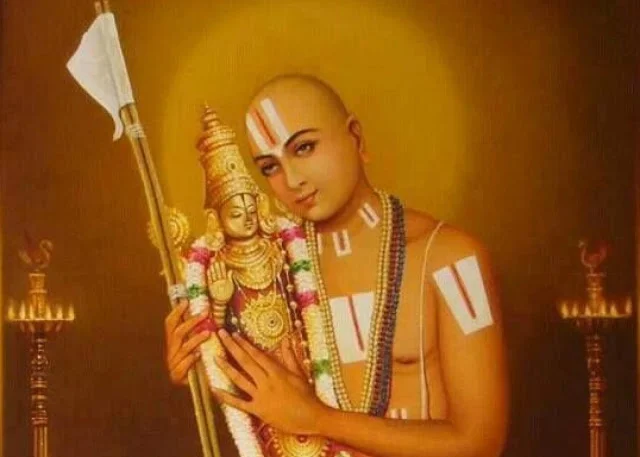
So, form aspect of Brahman got its push through Sri Sampradayam. Other sampradayas also have their teachings based on the personal, internal mood of the founder of that specific Sampradaya.
Analyzing Jnana and Bhakti
Now, we shall see the key similarities and difference in both the school of Jnana and Bhakti.
1) Mode of worship-
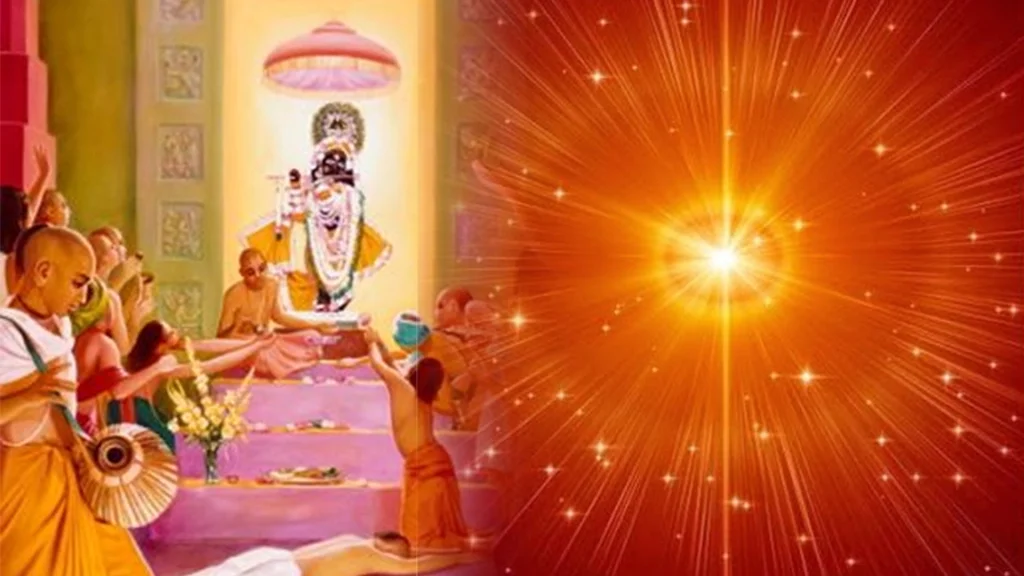
The Bhakti school of spirituality connects with the deity (form) while the Jnana school of thought relies on the energy (formless) aspect. Some perceive that superior object as an energy or a force while some can better relate to the form of that Superior force. However, we can draw a similarity in the two schools of thought by saying:
“Form and formless can be synonymously present in the superior force/entity. They can therefore be interchangeably used to address it/Him as per the context.”
2) Jnana depends on Bhakti
All said and done, energy (formless) still requires to manifest on the physical plane. Only then can we prove its existence. Isn’t it? Let’s understand this deeply.
The analogy of air

Air is energy. But, air can be called ‘air’ only if it displays some properties. Moreover, air earns the name ‘air’ only if it manifests in a particular way.
To feel its presence, humans must be able to breathe, grass must move, dust must fly, motility must be exhibited. Thus, These are some key observations for something to be called ‘air’. So, Jnana subtly accepts that formless has a form (a precept of the Bhakti school), when it comes to expression.
In this case, energy requires to manifest or take form to prove its existence.
3) Bhakti depends on Jnana
Similarly, the Bhakti school which preaches the form principle adopts the existence of energy or formless. Now, we may ask how? For Bhagawan (Form) to function, he requires energy or his force, which can be termed Maya.
The energetic is the one who is the Master of Energy. So, the form aspect (Bhagawan) has within itself the formless (Energy).
Although it has a form, it’s formless attribute initiates activities like creation, maintenance and dissolution.
The analogy of Bhava
Another formless attribute ingrained in Bhagawan is ‘Bhava’. It is said that the Lord becomes overjoyed when receiving devotees in Vaikuntha.
The feeling Bhava is formless, but it gets expression through the gestures of Bhagawan.
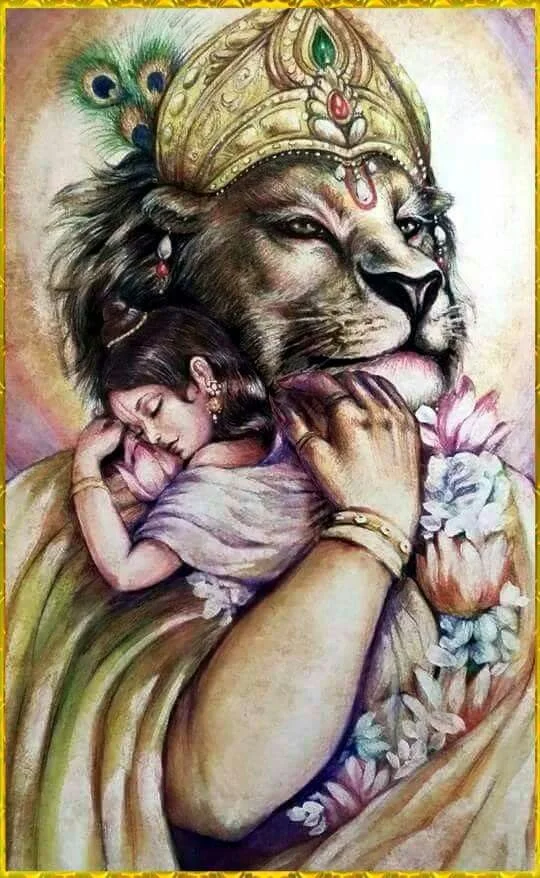
The sole, unseen emotion is giving us pleasure, which manifests through the limbs of Bhagawan, like a soothing embrace.
So, here too, formless plays a major role in tightening the bonds of love between Bhagawan and jiva. Bhagawan can be fully experienced only with the involvement of the formless principle ‘emotion’ or ‘bhava’.
Although, it is subtle, it can only be felt. This feeling is similar to a mother’s hug.

The action ‘hug’ has no meaning if there is no warmth and care. People hug each other in parties just as a formality. The action itself has no meaning. But, it is the emotion which justifies an action. This is the closeness of Bhakti and Jnana.
Please Like the Blog and Share it for Maximum Reach

